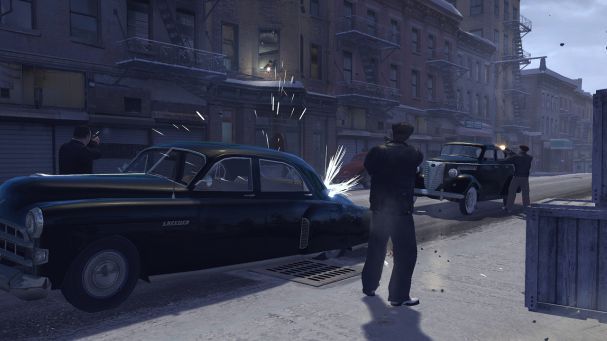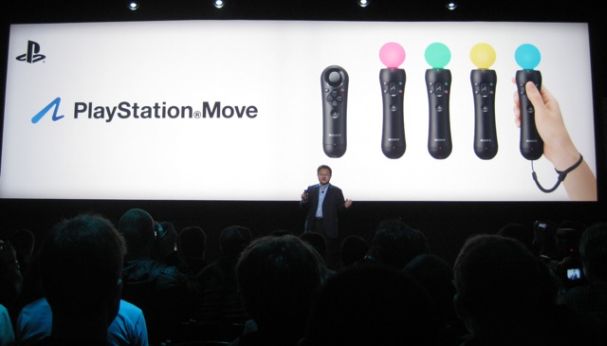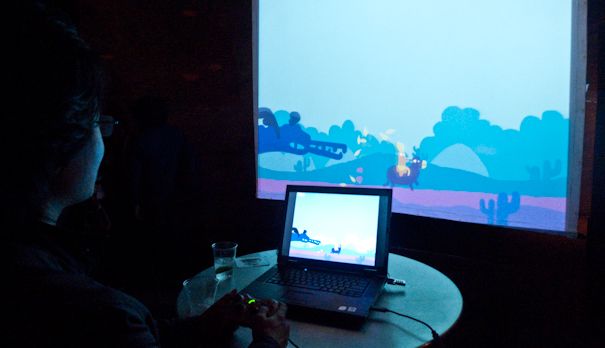This post has not been edited by the GamesBeat staff. Opinions by GamesBeat community writers do not necessarily reflect those of the staff.

I thought I knew what to expect from my first Game Developers Conference — after all, last year I had borrowed my friend's expo pass to sneak onto the show floor for a morning — but the difference between being a wide-eyed gate-crasher and a member of the media is the difference between attending a formal in a staid black jacket and a sequined blazer rimmed with foot-long tassels: You're a bit more noticeable.
I felt this acutely when, as I munched innocently on a dry sandwich at a communal table in the lunch room, a green-shirted staff member turned to me and asked me to please not write about their discussion of how they got into the industry. Despite the ridiculousness of the comment — did this guy really think his run-of-the-mill tale warranted discretion? — the point hit home. I wouldn't be a mere observer this time around.
Because even though the Game Developers Conference is ostensibly for game developers, the press plays a vital role in bringing attention to their games, middleware, audio equipment, and giant virtual-reality hamster balls. And that attention, they hope, will eventually reward them with large piles of money.
Behind the Velvet Rope: My First Game Conference as Press (Part 1) — You are here
Behind the Velvet Rope: My First Game Conference as Press (Part 2)
Day 1
My conference experience started on Wednesday with a slew of game demos at nearby hotels (the main show floor didn't open until Thursday). I've done my share of these demos by now, but never four in quick staccato succession. By the end of it I felt a bit dizzy, and if I didn't take copious notes during them I'd probably be telling you now about Lara Croft waged hex-based battles against mafiosos – all of it controlled by wands tipped with glowing balls.

First off was a developer-led tour through the new downloadable Lara Croft game (don't call it Tomb Raider), which I wrote about earlier. Then I teamed up with Shoe and Demian to look at 2K's offerings, Mafia 2 and Civilization 5. Mafia 2's 1950s setting piqued my interest, but I think I'm getting open-world fatigue — at least the type of open worlds that shamelessly ape Grand Theft Auto. Civilization 5 sure looked interesting, but as I've never played a Civilization game, I can't say much about it. The guy giving the demo kept hammering the point that the map is now hex-based as opposed to quad-based. Since six sides is invariably better than four, I'm going to assume this is a good change for fans. Also, you can no longer “stack” armies, which — and granted, I'm no tactician here — generally seems like a good idea, unless your army is made of up midgets.
Following the 2K demos was the Sony press event — my first honest-to-goodness press conference. I was a little giddy for this, because how often do you get to be in the room where Big News is announced? And press events are where companies announce their Big News, right?
Right?
Instead the only news to come out of the conference was a name, and a stunningly unoriginal one at that. Sony devoted the entire event to the PlayStation Move, their answer to this newfangled motion-control fad that's taken the world by storm. After the name appeared onscreen, the crowd tittered, which turned into full-fledged muffled laughter when they dropped the name of their Nunchuk equivalent, the PlayStation Move Sub-Controller. Rolls right off the tongue!

After the pep talk, we journalists shuffled into the next room to try out the Move for ourselves. There were far more journalists than television screens, so I had to wait…and wait…and wait to play something that turned out to be no different than a date with the Wii. Sure, the graphics are prettier, but when the games feel like glorified tech demos and me-too imitations, pretty doesn't help much.
Soon the TVs were shut off, and we made out way back to the press event room, which had been turned into a massive celebration for God of War 3. Projectors threw giant images of concept art on the walls, stilt-walkers teetered among the crowds, delicious finger food passed under our noses – and oh yeah, God of War 3 was playable, too.
This party played host to my most surreal experience at GDC: the Canadian indie band Metric – one of my current favorites – playing to a crowd of about 30 people as hundreds of other gamers sat hunched in front of screens with noise-canceling headphones on. What Metric has to do with God of War, I have no idea. But since I missed the opportunity to get tickets for their upcoming show, I can't complain. Still, I was disheartened to see a band who could pack a mid-sized venue in San Francisco play to a house of apathetic people too busy playing a game that would be out in less than a week.

Once Metric finished their set, Demian and I made our way to the Gamma 4 event at a local nightclub. The stars of the event were six games that all adhered to the same principle: one-button control. From restraint sprang stunning innovation, from a party game called B.U.T.T.O.N. that had players writhing on the floor and fighting desperately to push the button on another player's controller to Poto and Cabenga, in which you actually controlled two characters simultaneously with one button. To see these designers craft so much game with such a limited palette blew my mind. It reminded me of some of the fantastically creative filmmaking inspired by the strict tenets of Dogme 95. The Gamma 4 games were some of my favorites of the entire show.
(Read on for Day 2)
